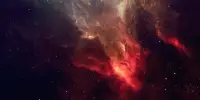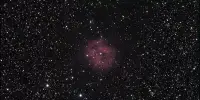There are many examples of galaxies colliding in the cosmos, but Abell 2146 is substantially larger, having been generated by the merger of two massive galaxy clusters, each comprising hundreds of galaxies. Unsurprisingly, the impact’s shockwaves are massive, as demonstrated by the first systematic analysis of cluster merger shockwaves. Within Abell 2146, there are two shock fronts, each measuring roughly 1.6 million light years across. The bow shock, which is similar to the bow wave caused by a moving boat, and the upstream shock, which follows behind the moving cluster, are the two types of shocks.
A team lead by Dr Helen Russell of the University of Nottingham describes and analyzes data from the Chandra X-Ray and Subaru optical observatories on these two shockwaves in the Monthly Notices of the Royal Astronomical Society. Even at its enormous scale, Abell 2146 is 2.8 billion light-years away, making it difficult to view. Despite this, the shocks are revealed with amazing clarity by the two powerful telescopes.

Collisionless shockwaves are produced by Abell 2146. Collisionless shocks arise when the density of particles in colliding material is so low that they practically never interact directly, which may appear to be an internally contradictory statement. Because the gasses between galaxies within a cluster are so diffuse, unless individual galaxies collide, a particle from one cluster would have to travel 30,000-50,000 light-years before colliding with one from the other.
The overall number of particles in such a huge volume of space is large, and a few will collide, but such collisions are inadequate to generate a shockwave. Many particles in each intergalactic medium, however, are charged. Shockwaves are the result of collisions between particles in one cluster and the magnetic field in another. Because there is no direct collision between particles, the shocks “dissipate most of the merger’s 1064 erg of kinetic energy,” forcing the clusters to merge rather than pass past each other and go on.
Even though the interstellar medium is far thicker than the gas between galaxies, it produces a collisionless shock wave when it collides with the bubble that constitutes the solar system. As a result, Abell 2146 might aid astronomers in modeling the shock our solar system is making by giving us with a unique opportunity to watch collisionless shockwaves from the outside. “Our results for Abell 2146 should be applicable for collisionless shocks with similar characteristics in other settings,” the article states, “and support the current picture from the solar wind and supernova remnants.”
“When I was a Ph.D. student, I first noticed these shock fronts in a brief Chandra observation. This deep, profound observation exposing the intricate shock structure was a wonderful finding and a magnificent adventure “In a release, Russell stated. The document mentions Abell 2146 is one of only three known cluster mergers with bright enough shock fronts to examine. Even the diameter of Abell 2146’s two shock layers is remarkable — the bow shock is more than 50,000 light-years wide, about equivalent to the Milky Way’s radius. Understanding collisionless shockwaves is important because they can emit radiation that could jeopardize the safety of space probes and crewed missions.
















